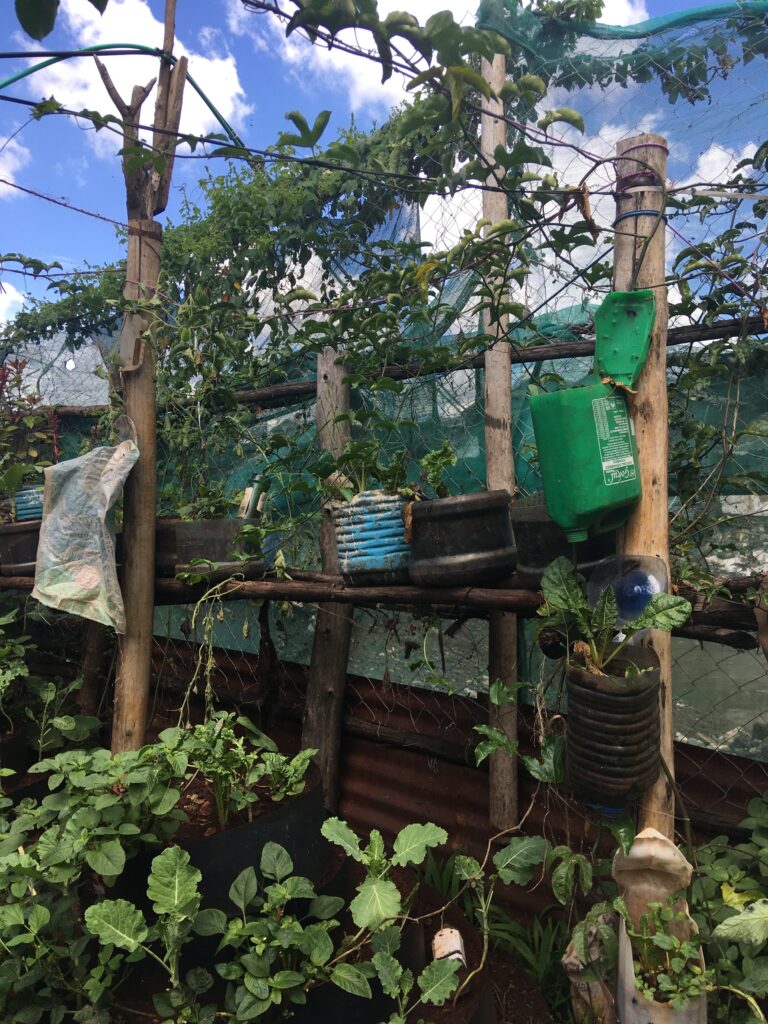
Urban agriculture (UA) encompasses various meanings globally, generally denoting agricultural or gardening activities within urban areas and their peripheries. Its expression varies contextually, shaped by historical, socio-economic, climatic, and cultural factors. Increasingly recognized as a potential multifunctional solution, UA might address diverse urban challenges such as food security, climate change adaptation, and biodiversity loss in cities. For my Master’s thesis, I decided to focus on UA in Nairobi and to explore it as a potential Nature-based Solution (NbS). NbS is an umbrella term referring to working with nature to solve various societal problems, providing benefits for both, human well-being and the environment (Seddon et al., 2020).
There are several aspects that make Nairobi particularly interesting to consider in the context of UA. It has a rich UA history, transitioning from an illegal activity opposed by the Nairobi City Council to being actively promoted and regulated (IPES-Food, 2017). The Urban Agriculture Promotion Act adopted in 2015 signals a favorable policy environment, making the exploration of UA as a NbS more fruitful. Additionally, amid the COVID-19 pandemic, there was a notable surge in UA activities, showcasing its potential as a grassroots solution to enhance urban resilience during crises like the pandemic. This might be also applicable in times of climate change.
In the context of NbS, UA is framed in different ways in academic literature. One way is to understand it as part of the urban green infrastructure (UGI), a network of urban green spaces that provide various ecosystem services to city dwellers (Anderson and Gogh, 2021). UA reintroduces greenery into cities and does not only serve for urban food production but might yield biodiversity benefits if properly managed in otherwise simplified landscapes (Lin et al., 2015). More recently, scientific work has also focused on UA as a strategy to mitigate the impacts of climate change and reduce climate-related risks (Dubbeling et al., 2019; Lwasa et al., 2014; Lwasa et al., 2015).
Due to the contextual nuances that influence the benefits and barriers linked to UA, this research primarily focused on identifying the motivations that drive UA initiatives and proponents, elucidating the benefits it offers, and outlining the prevailing challenges. Using a qualitative methodology, semi-structured interviews were conducted with various stakeholders involved in UA initiatives, including community-based organizations, non-governmental organizations, and local experts specialized in the field of urban food systems.
It is important to note that UA can only serve as a NbS if appropriate management practices are used that do not threaten human or environmental health. Therefore, one key objective of the study was to assess the practices of UA practitioners. To this end, I visited various local sites where UA was being conducted or which served as UA training sites. This included, for example, a guided tour of the Kitchen Garden Demonstration Site established by the Ministry of Agriculture, Livestock, Fisheries and Co-operatives at Kilimo House. I gained in-depth insights into the technologies used, their resource efficiency, and other sustainable management practices, such as organic pesticide formulations. Prior to my fieldwork, I had already learned from reading various blog posts about UA in Nairobi that organic farming practices are widely promoted and thus seem to play a crucial role in UA initiatives. To gain more practical insight into these practices, I spent a day working at a commercial organic urban farm in Eastlands, Nairobi. In addition, I visited various UA sites of UA initiatives in informal settlements to learn about context-specific challenges and how local initiatives practice UA in their respective settings.
Analysis of the empirical data collected through interviews and site visits revealed several key characteristics of UA initiatives in Nairobi. First, organic farming was prevalent, with a focus on natural pest and nutrient management, often using locally available ingredients. Motivations included concerns about food and environmental safety due to pesticide use and a desire for high-quality organic produce, as well as the use of locally available materials for subsistence farming. Second, grassroots technologies with an emphasis on resource efficiency were widely adopted. The reuse of readily available materials was a key aspect, promoting low-cost and accessible UA. Finally, the planting of indigenous crops was common, driven by increasing demand for their health benefits, preservation of cultural heritage, and their adaptability to local conditions, especially in the face of climate change.
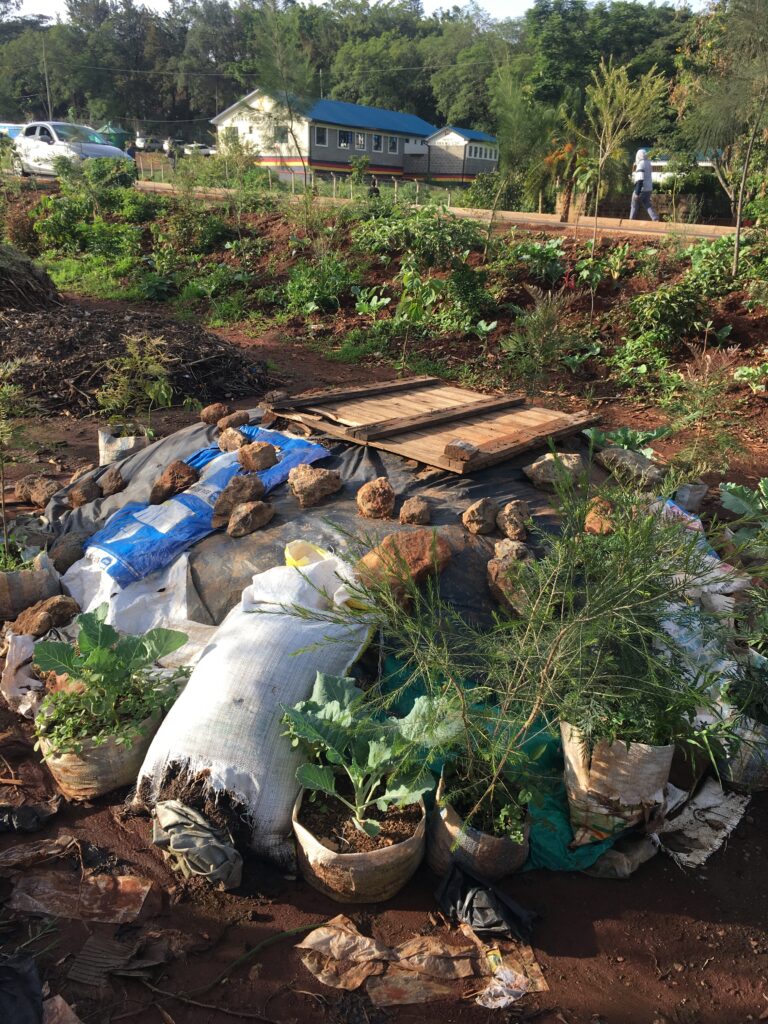
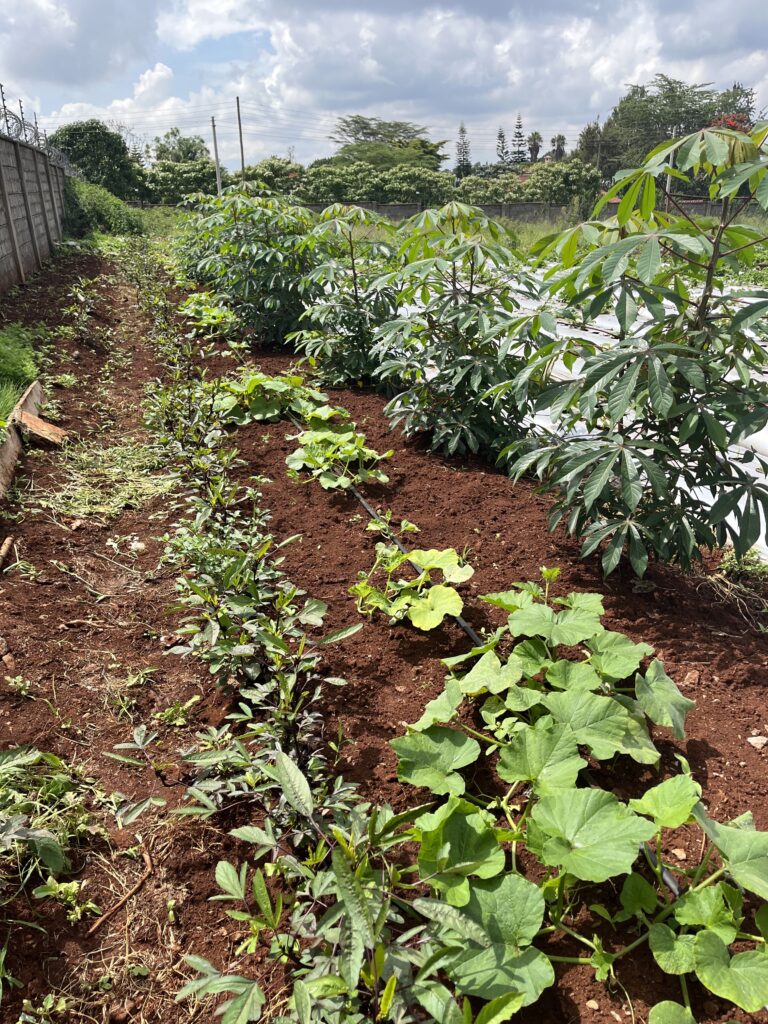
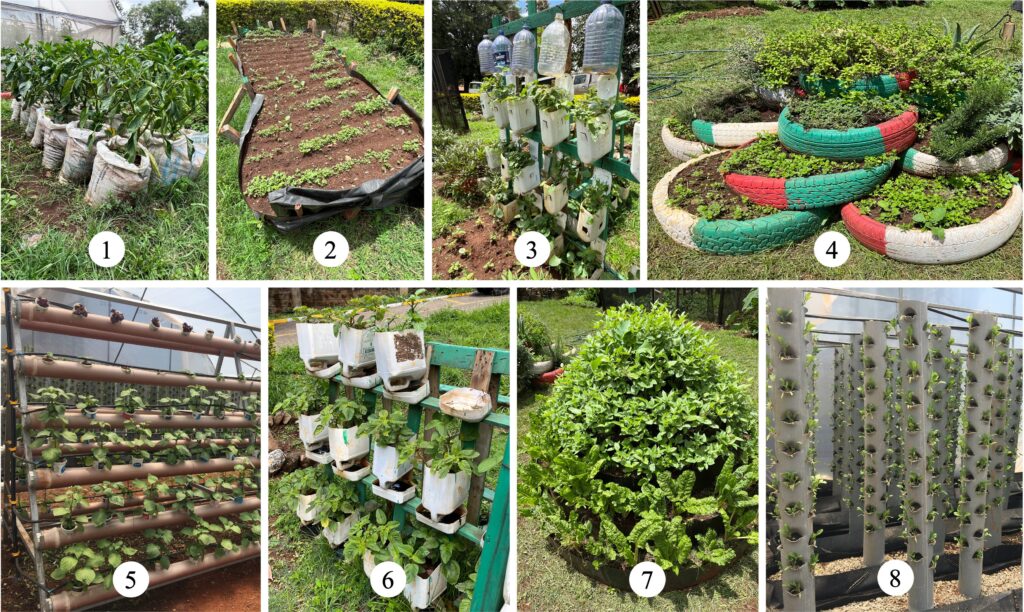
I also wanted to gain insights into the multifunctionality of UA by exploring the diverse set of benefits associated with it. Overall, UA was perceived as providing a variety of benefits. Primarily, interviewees highlighted its significant impact on the social dimension, enhancing food security, especially for poor urban dwellers. UA was seen as empowering individuals through control over food choices, education, skills, and community involvement. It was also linked to resilience, reducing vulnerability by decreasing dependence on external food sources and assisting communities in crises such as COVID-19 and climate change. In addition, UA was noted for promoting social cohesion, facilitating knowledge sharing, and deepening the connection between urban dwellers and nature. Environmentally, UA was seen as a way to “re-green” the city by reintroducing greenery and combining food production with urban green spaces, thereby providing climate change adaptation benefits and reducing air pollution. It was also seen as contributing to ecosystem conservation, acting as a community-led solution that integrates nature appreciation and sustainable conservation practices in cities, especially in urban informal settlements. Moreover, UA was recognized as a sustainable practice that integrates urban waste, promotes recycling, and contributes to a biocircular economy and a more sustainable urban environment. In terms of economic benefits, interviewees frequently emphasized the role of UA as a source of income, supplementing earnings from casual labor and creating income-generating activities like setting up gardens and hosting school excursions. UA was also acknowledged for its ability to save costs on food, particularly vegetables, and its role in employment generation, addressing high youth unemployment rates and offering opportunities for sustainable livelihoods.
However, farming in the urban environment of Nairobi city, especially in informal settlements, is not without its challenges. Interviewees raised several issues, most of which are reflected in the UA literature, with some contextual nuances. Prejudices and stereotypes associated with UA were noted, including concerns about hygiene and aesthetics, which hindered UA adoption. Limited access to suitable land for agriculture and inadequate consideration of UA in urban planning were seen as contributing to space constraints, particularly in informal settlements. Environmental challenges included concerns about environmental pollution, contaminated soils, and inadequate access to clean water, all of which affected the viability and safety of UA. Economic challenges arose from the high initial investment costs for setting up urban farms and the heavy reliance on external funding, especially in informal settlements. According to interviewees, this was a key that hindered the widespread adoption of UA.
Reflecting on this enriching journey, key findings from the fieldwork shed light on the potential and limitations of UA as an NbS in Nairobi. Understanding the practices promoted by UA initiatives, the multifaceted benefits and nuanced challenges of UA was critical in understanding its potential role in promoting sustainable urban development in Nairobi.
Moreover, this experience facilitated invaluable intercultural exchange, broadening my perspectives, and enhancing my appreciation for diverse approaches to urban sustainability challenges. Engaging with stakeholders and witnessing firsthand the motivation and creativity within the local communities was a transformative learning experience.
In conclusion, I am immensely grateful for the opportunity to conduct fieldwork in Nairobi, and I look forward to using the knowledge and insights gained to contribute to the discourse on NbS.
Acknowledgements:
The funded fieldwork conducted in Nairobi, Kenya, from March to April 2023, was an essential component in the pursuit of my Master’s degree at the University of Cologne, Germany. This six-week endeavor was made possible through the support of the DAAD’s African Climate and Environment Center- Future African Savannas (AFAS) program, an initiative focused on integrating NbS to enhance resilience across African savannas, to which I would like to express my gratitude once again for this opportunity.
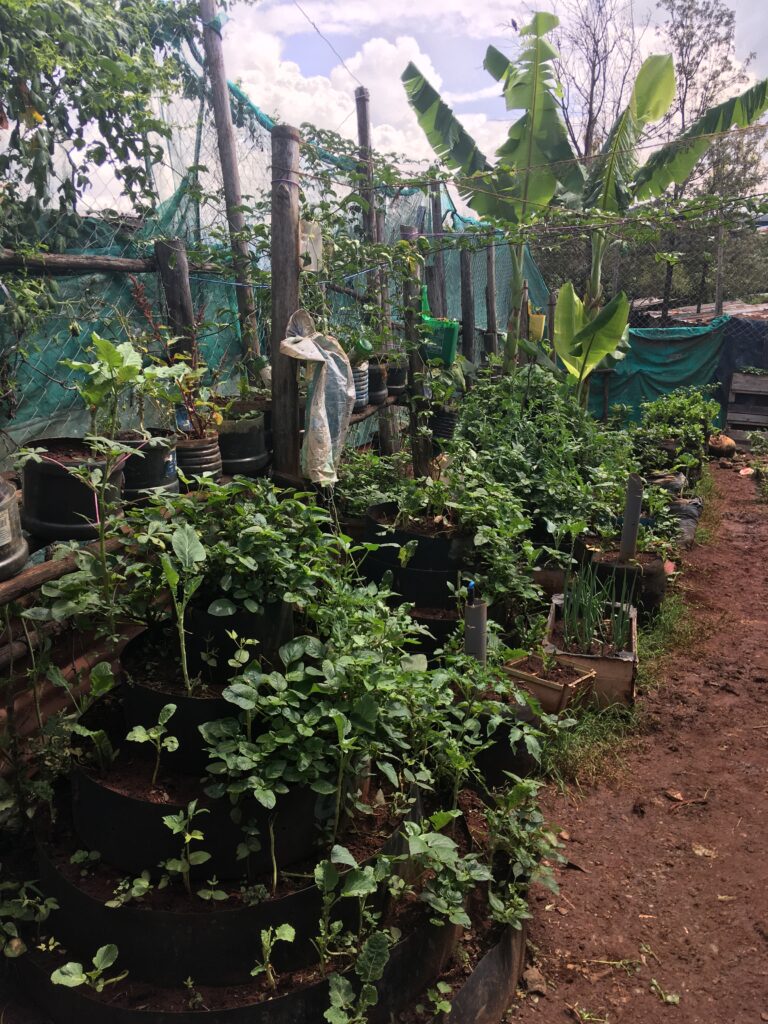
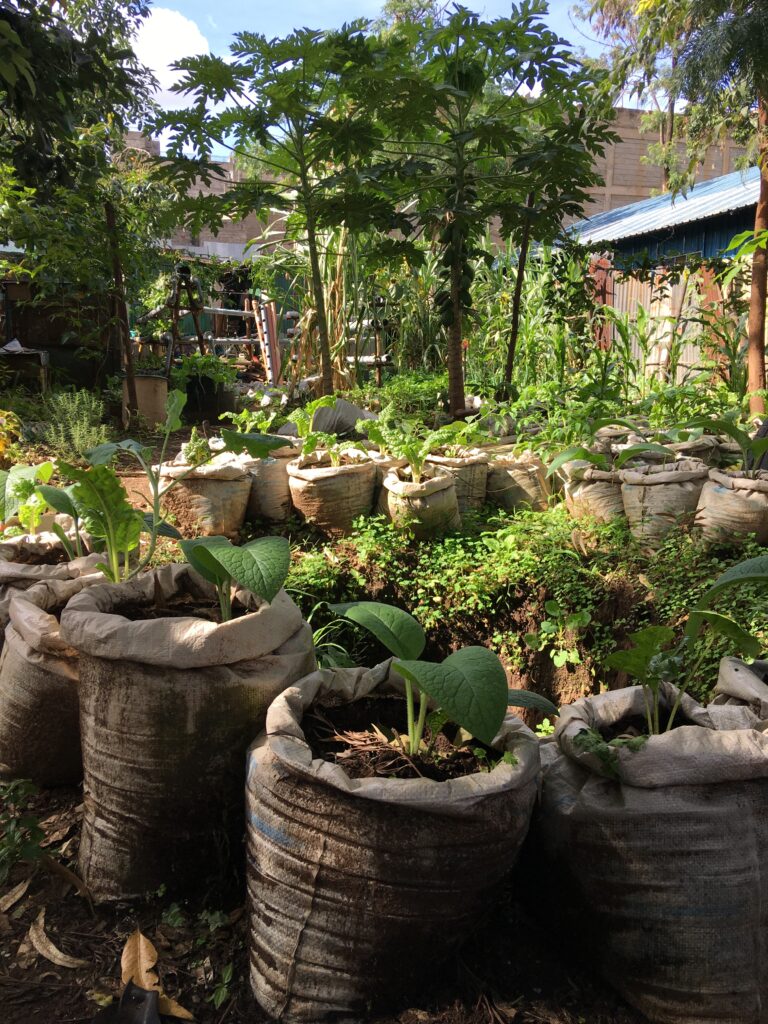
Bibliography
Seddon, N., Smith, A. C., Smith, P., Key, I., Chausson, A., Girardin, C., House, J., Srivastava, S. & Turner, B. (2021). Getting the message right on nature‐based solutions to climate change. Global Change Biology, 27(8), 1518–1546. https://doi.org/10.1111/gcb.15513
Information about the author:
Anica Luggen-Hölscher is a student in the International Master of Environmental Sciences (IMES) at the University of Cologne. To conduct her research in Nairobi, she received a scholarship for research funding from AFAS.
(anica_luggenhoelscher[at]web.de)